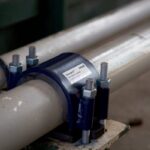Q61. What is Hess law?
Answer – According to the Hess law, the energy transfer is simply independent of the way being followed. If the reactant and the product of the whole process are the same then the same amount of energy will be dissipated or absorbed.
Q62. What is PS?
Answer – Personal Statement. It is something that gives an informative background about an individual.
Q63. What is a bearing? What are the different types of bearings?
Answer – The bearing is a device that helps smoother movement with minimal friction which in turn helps enhances efficiency and speed. Considering two types of loading, radial, and thrust, there are different types of bearings which help handle these loads. The basic difference in the types of loads is essentially due to their ability to handle the weight and different kinds of loads for various applications. Different types of bearings are:
(a) Ball bearing
(b) Roller bearing
(c) Ball Thrust bearing
(d) Roller thrust bearing
(e) Tapered roller bearing
(f) Magnetic bearings
(g) Giant Roller Bearing
Q64. What is a time and motion theory?
Answer – Frederick Taylor was a pioneer of the time and motion theory. This technique monitors the amount of time required to complete a task along with observing the steps taken by a worker to complete the given task.
Q65. Which is the hardest material on earth?
Answer – Diamond is currently the hardest material, made up of carbon atoms which cannot move. Carbon is the only atom that can have four electrons in the second shell surrounding the carbon nucleus, precisely why making a diamond the hardest material. However, there also are claims by a few to a new rare material called Wurtzite Boron Nitride which has a structure similar to a diamond but has some other atoms in place of carbon.
Q66. One unit of BTU is how many Joules?
Answer – 1 BTU=1055.06 Joules
Q67. What does a pump develop? Give the reason to support your answer.
Answer – The pump is a device that is used to transfer fluid from one place to another place which means it develops flow not pressure.
Q68. Explain the difference between pipe and a tube.
Answer – A pipe is measured based on its inner diameter (ID) whereas a tube is measured based on the outer diameter (OD). Other than the dimensions there is no major difference between the two.
Q69. What is Bauschinger effect?
Answer – According to Bauschinger, the limit of proportionality of material does not remain constant but varies according to the direction of stress under cyclic stresses
Q70. List two effects of manganese in plain carbon steels.
Answer – Manganese increases tensile strength and hardness. It decreases weldability.

